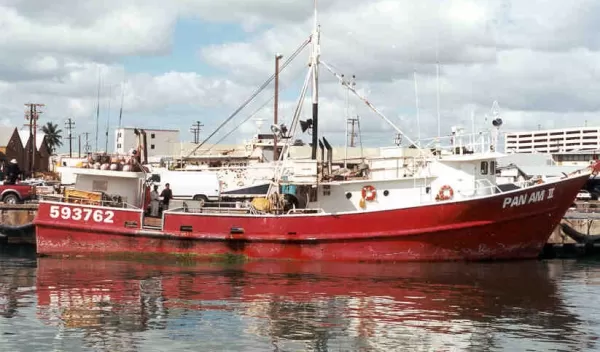
Sea Turtle Conservation Method Could Have Unintended Consequences for Sharks, Marlins
In addition to the tuna and swordfish prized by consumers, commercial fishing boats unintentionally catch endangered sea turtles. Some conservationists advocate the worldwide adoption of circle-shaped fishhooks, which snag fewer turtles than do the more widely used J-shaped hooks.
However, recent findings reveal that switching to circle hooks might bring its own set of problems: shark and marlin populations may decline as a result.
Scientists are becoming increasingly concerned about sharks and marlins, whose populations have plummeted in the Atlantic, said lead paper author Isaac Kaplan, then at the University of Wisconsin at Madison and now a biologist with the National Oceanic and Atmospheric Administration Fisheries Center in Seattle, Wash.
The researchers' results suggest that switching to circle hooks would deplete marlin biomass by 25 to 40 percent and shark biomass by 15 to 30 percent over 30 years.
Although circle hooks capture fewer sea turtles, data show that they catch more fish. Using a mathematical model of relationships among species in the Pacific Ocean, the researchers showed that the higher fish catch rate would trigger declines in shark and marlin numbers.
When the effects of catch-and-release requirements for marlins and sharks were considered along with use of circle hooks, the scientists found that a combined policy--using circle hooks and releasing sharks and marlins--works best to protect marlin and shark populations.
Kaplan emphasizes the importance of multi-species ecosystem models. Fisheries management has historically focused on single species, "but ecosystem models allow us to see trade-offs between species," he said. "That's something we simply can't do with current single-species models."
The research was supported through the National Science Foundation (NSF) Biological Oceanography Program and conducted through the NSF-funded National Center for Ecological Analysis and Synthesis at the University of California at Santa Barbara.
The results were published online on March 8, 2007, in the journal Transactions of the American Fisheries Society. Co-authors of the paper are Sean Cox of Simon Fraser University in British Columbia, Canada, and James Kitchell of the University of Wisconsin at Madison.


